Final year project
Portable Sanitisation Device [Read more]
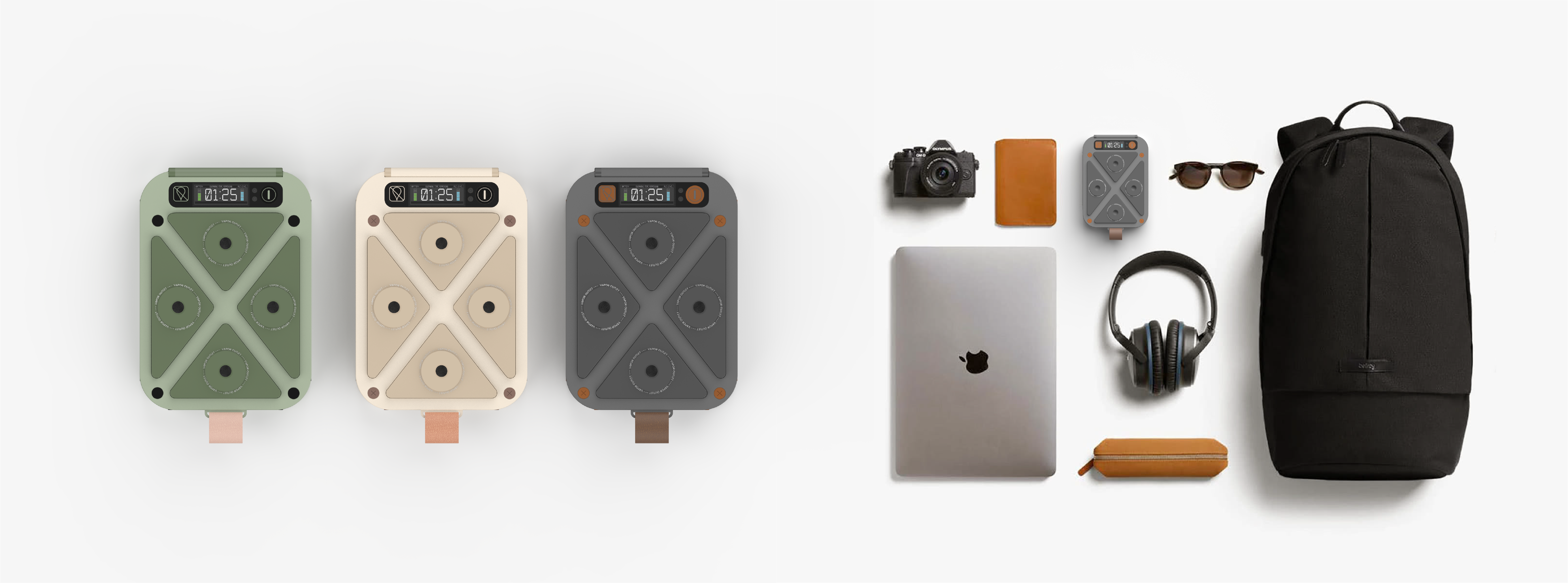
Portable Sanitisation Device
The portable sanitisation device is aimed at users who are often away from home for long periods of time such as delivery drivers or commuters making the cleaning of their face masks more difficult and therefore less frequent.
The device uses the heat of 75 degrees to remove bacteria or viruses from the mask within five minutes and vaporised alcohol to sanitise the user's hands instantly.
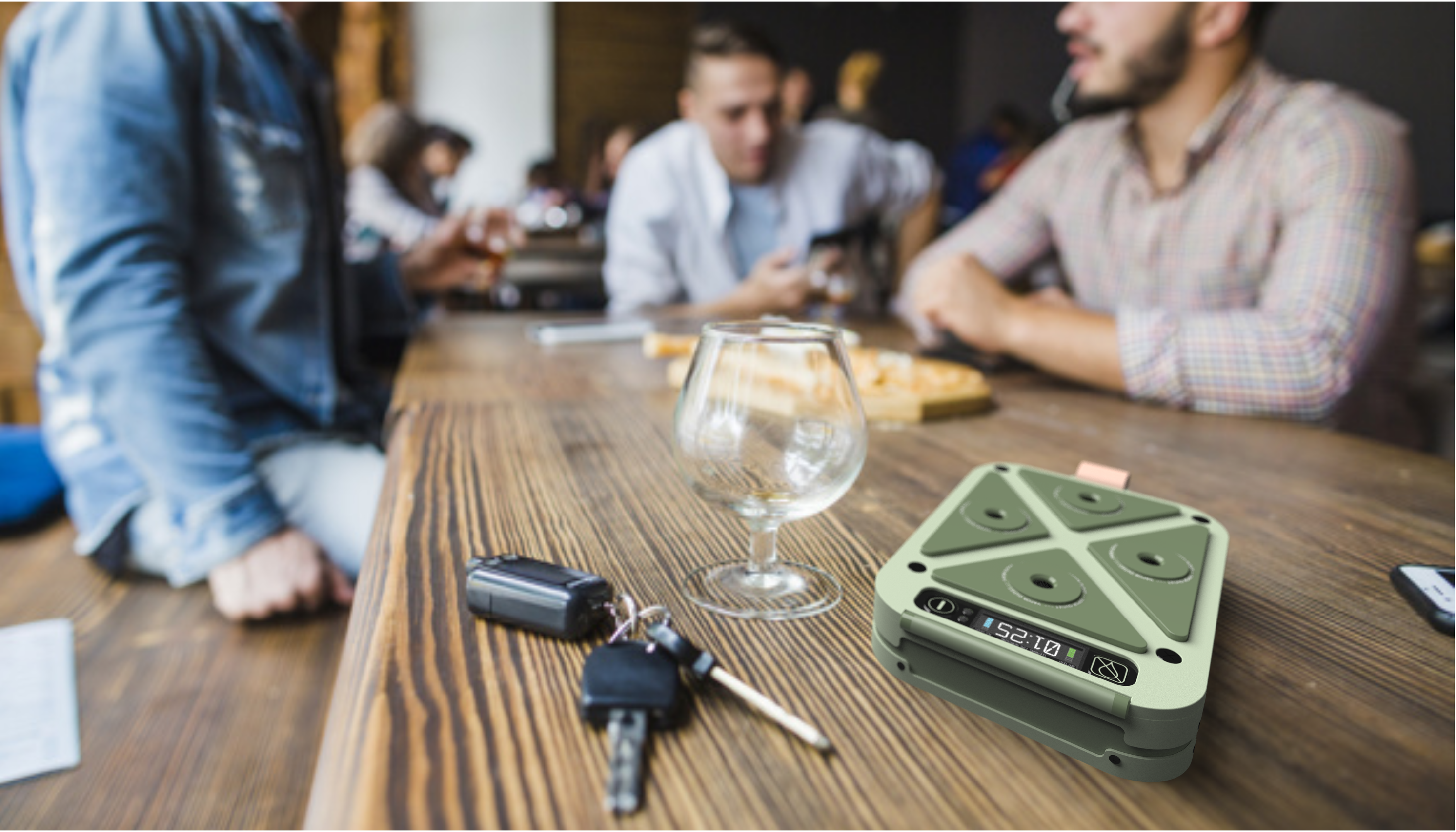

Portability and Features
The device is compact in size meaning it can slip into a user's bag or pocket. It also features a dashboard and air vent mount so that users are able to attach the device to their car or van, which is especially useful for people who regularly use their vehicle for commuting or work.
The device also features a choice of three colours to suit different users preferences.
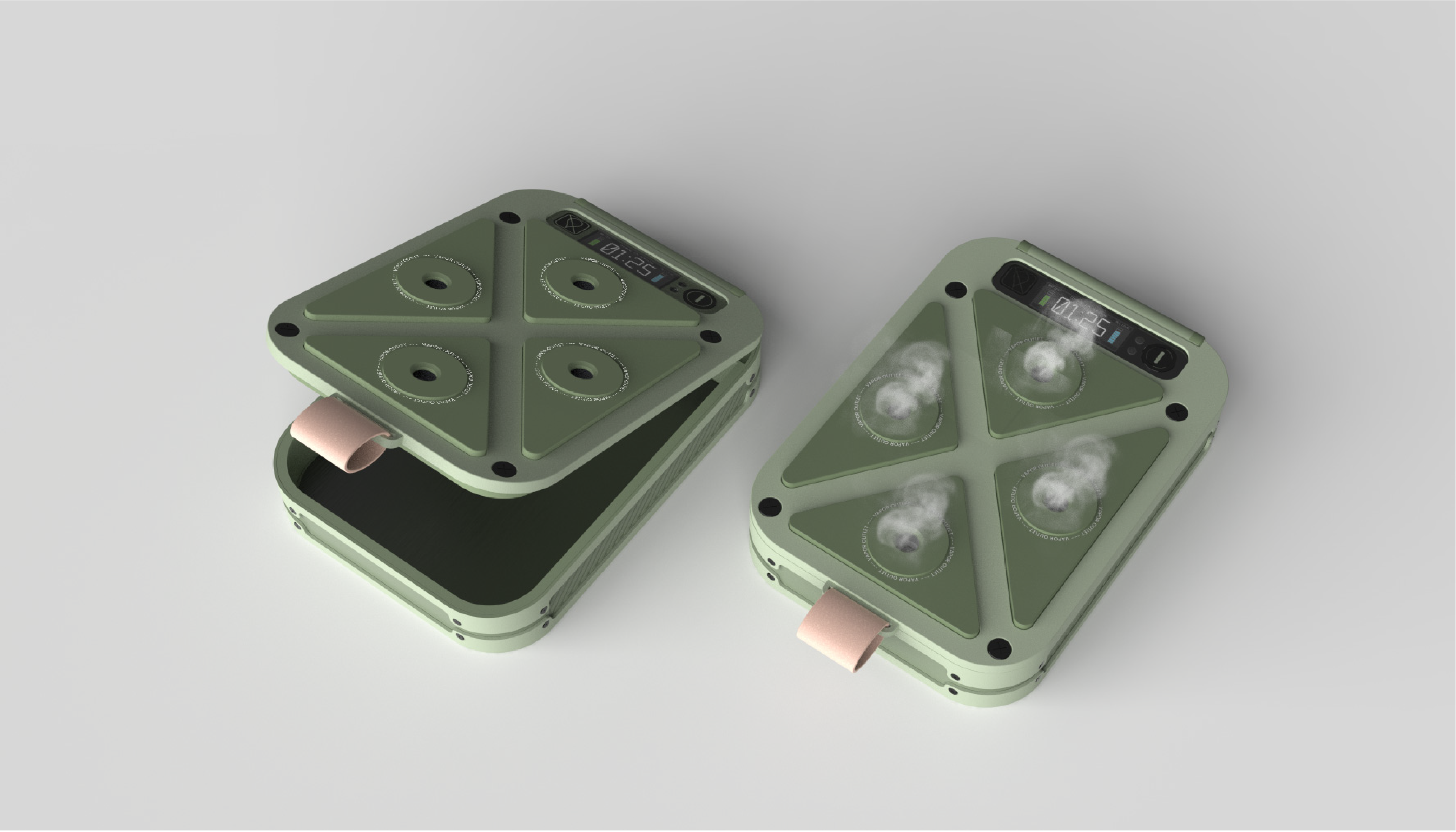

How Does It Work?
The mask is heated to 75 degrees using an aluminium heating plate which is spring-loaded to cause compression onto the mask, improving heat transfer. The mask is sanitised within 5 minutes which includes time for the heating plate to heat the mask, exposure time of three minutes at 75 degrees, and then a cooldown period, during which the mask is locked inside the device.
The user then hovers their hand five centimetres over the device which activates the piezoelectric transducers (vaporisers) which spray a fine mist of alcohol onto the user's hands via four outlets which instantaneously sanitises on contact. Then the clean mask is released from the device and is ready to be worn.
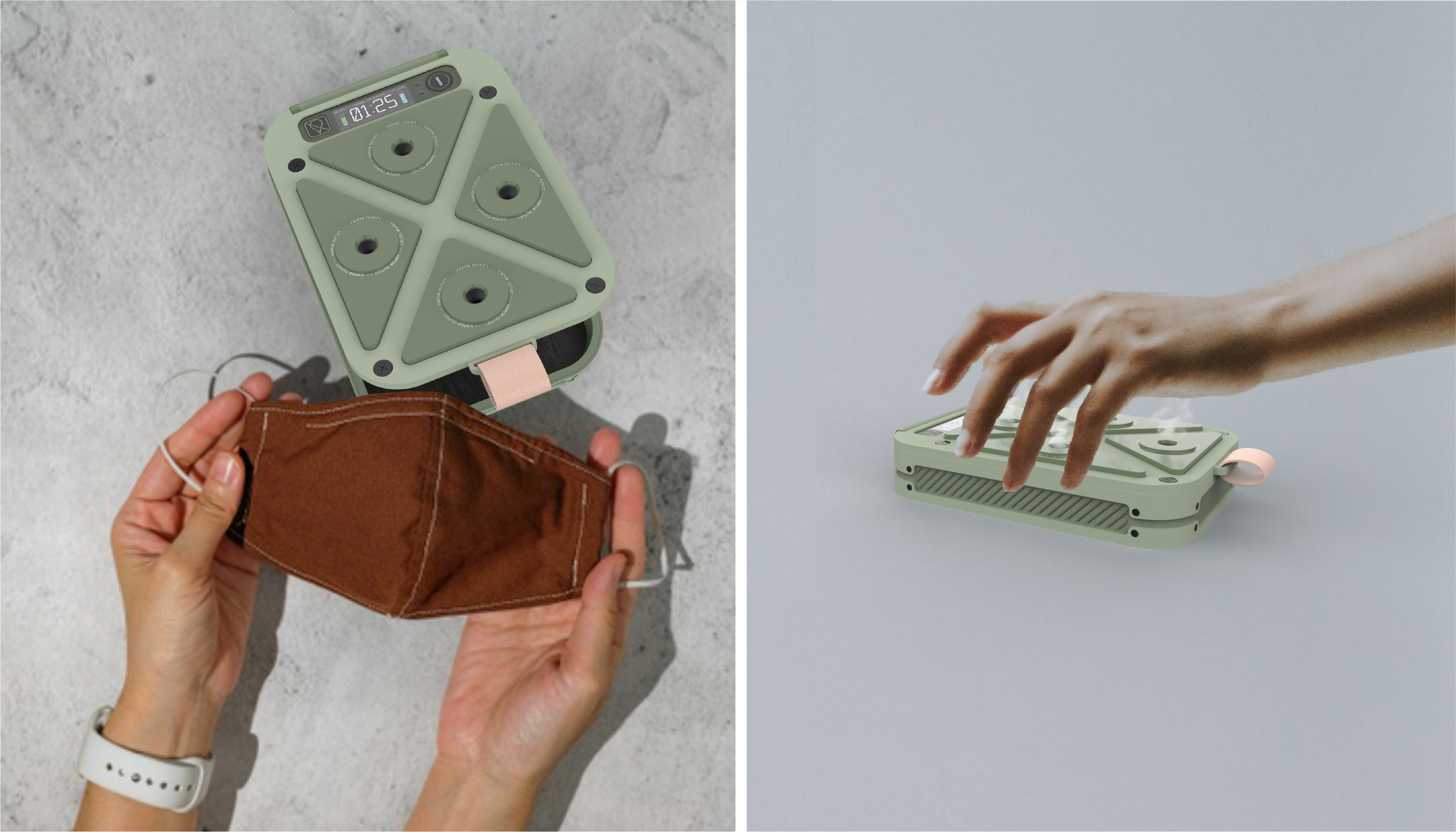

Research
The key research in this project was the temperature and exposure time required to kill coronavirus, the importance of cleaning face masks, why people don't wash their masks as often as is recommended and the technology required to effectively sanitise a face mask as well as the user's hands to prevent re-contamination after cleaning.
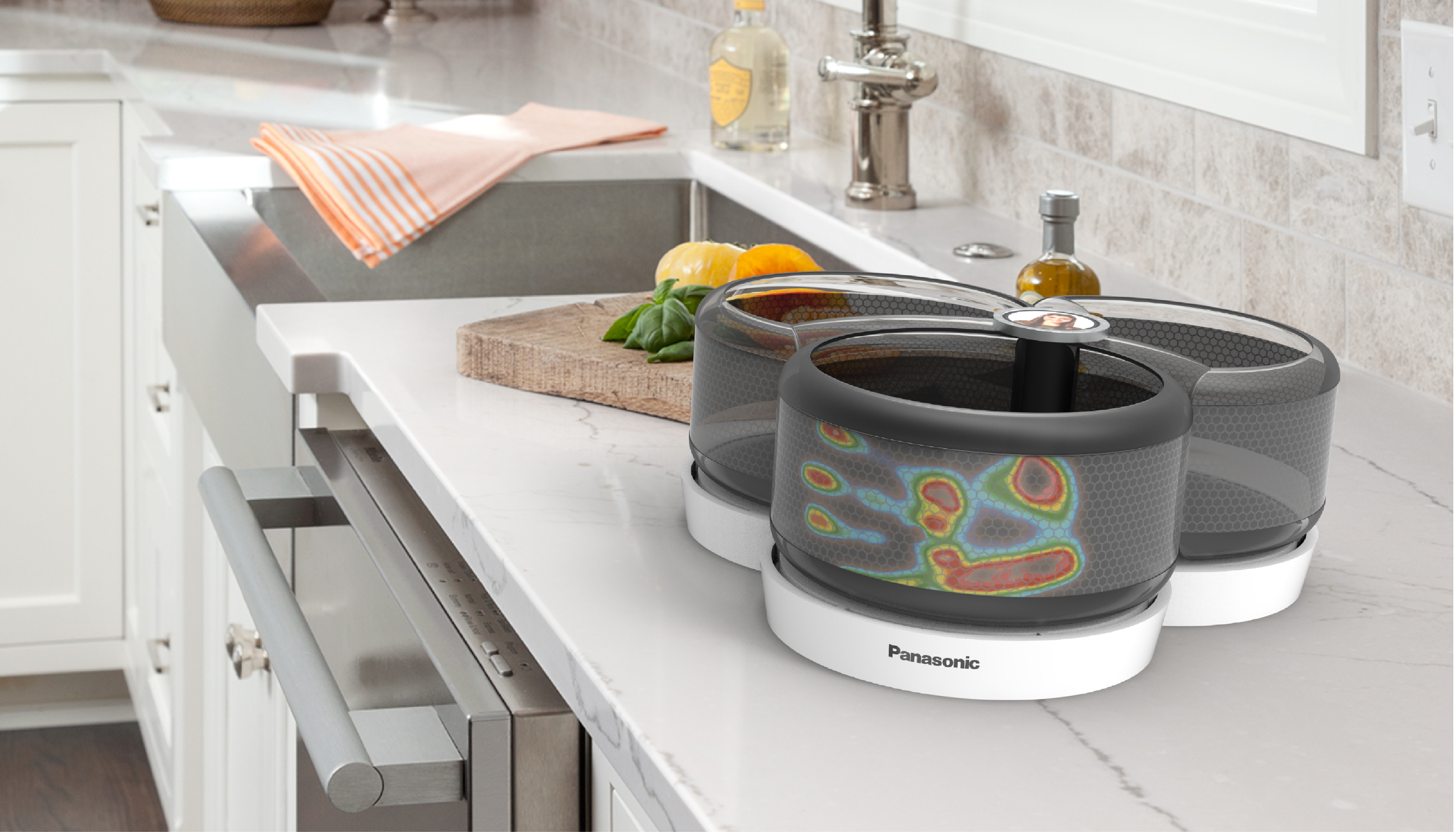

Better Relations
This design was part of a week-long project to create a solution to form better relations between loved ones despite separation due to the pandemic or long distance.
The solution allows loved ones to have the experience of cooking together despite being separated. The device uses heat, airflow and lighting to convey the feeling of closeness.
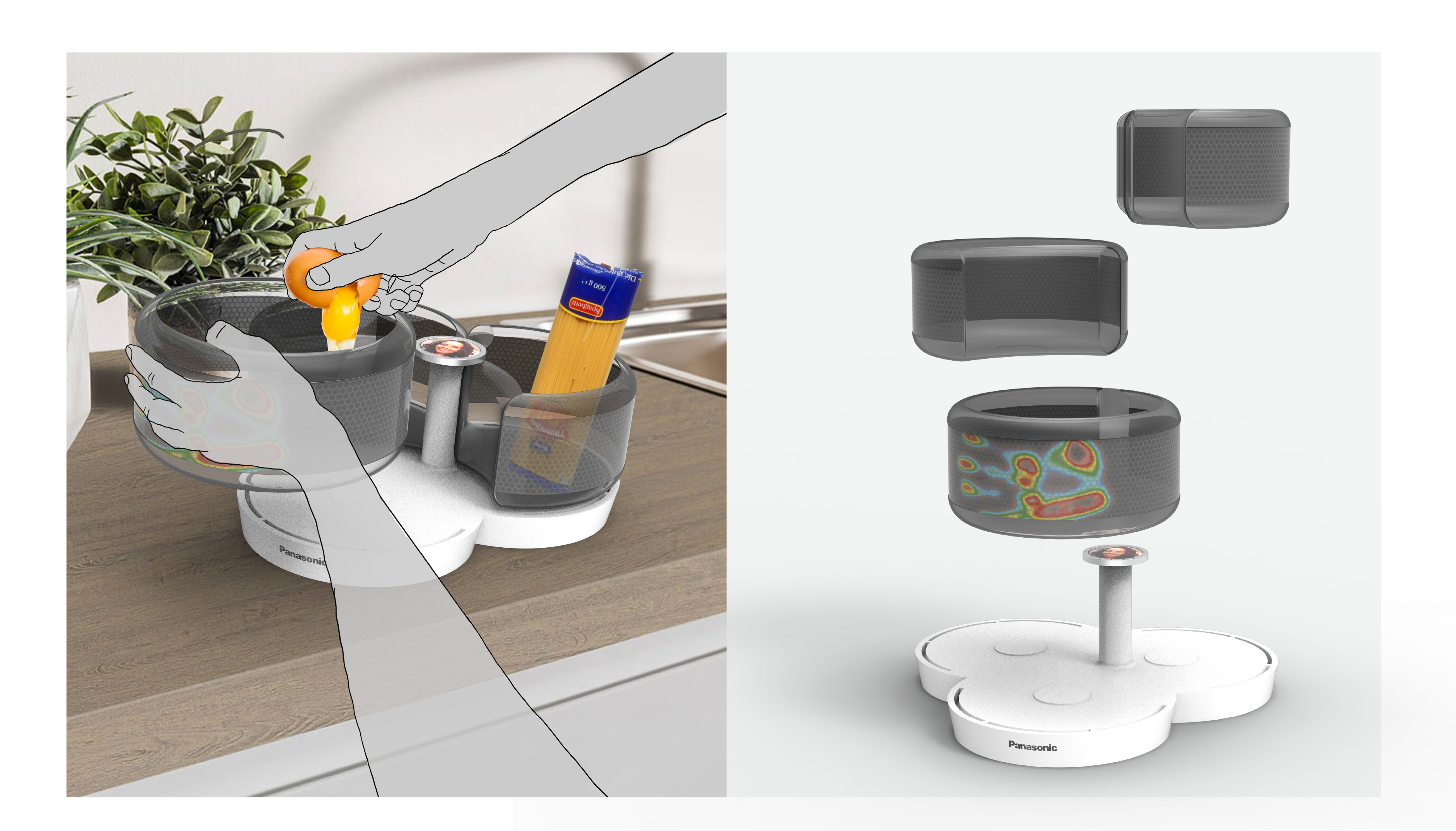

Connecting People Through Cooking
The kitchen is the heart of the home where most conversations and interactions with loved ones take place, when separated by a pandemic those interactions are lost. This device aims to capture some of those lost experiences and help people to reconnect.
The device is made up of three different-sized bowls which are used during cooking. When one user touches a bowl an imprint of their hand is displayed on the second user's bowl. This not only creates a sense of presence to the user but also aids cooking together by showing when an ingredient is added as well as displaying on the centre screen which ingredient it is.
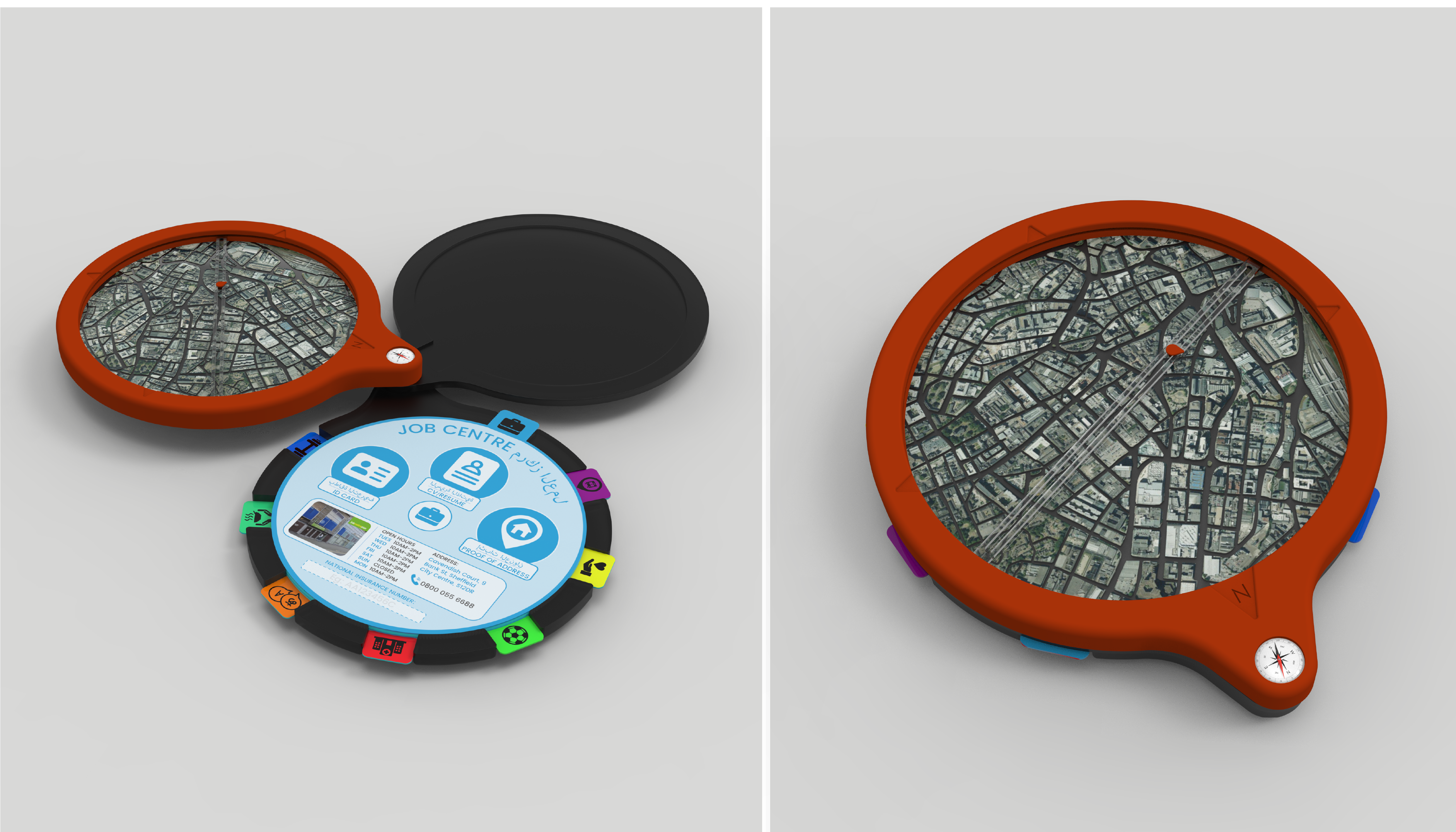

Equal Routes
A system to help refugees successfully integrate into the UK and live in a society with the freedom of self-expression without fear. The solution roots from the importance of social interaction between refugees and the general public. Focused on helping refugees learn their new environment and ensure they receive the support they need.
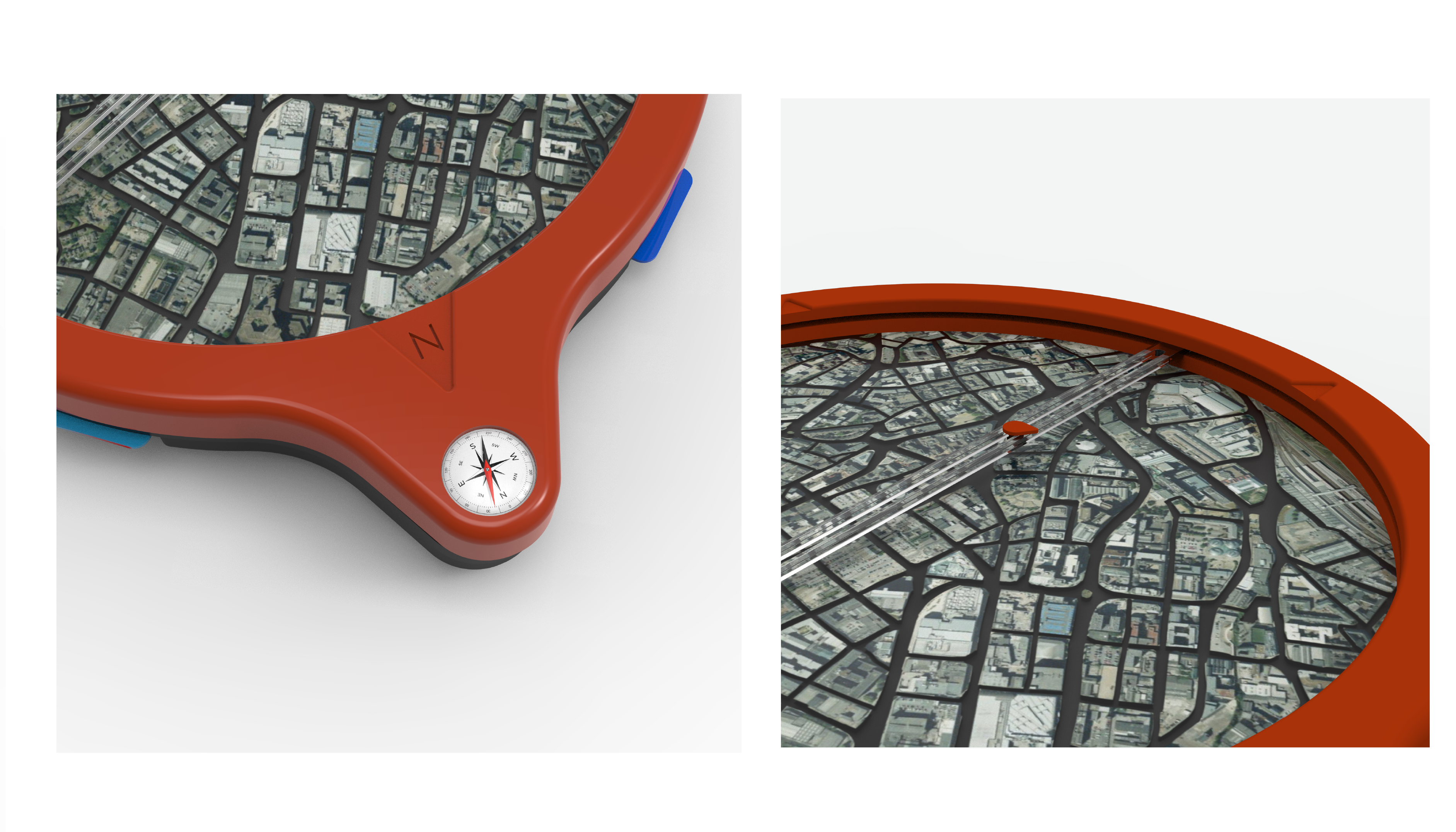

How Does It Work?
Equal routes consist of a number of cards that are tailored to the refugee's specific needs and goals. The device and cards are handed to the refugee after registering at the charity. The cards contain information that assists them to navigate their new environment, gain access to the available services and make new friends.
Ben Ashworth
A sanitisation device to allow users to clean their facemasks and hands whilst away from home.
Each project which I have completed aims to tackle a real-world problem with a considered and simplistic approach. For example, my most recent project looks at the issues around mask cleaning as currently, only 14% of people clean their reusable masks as often as recommended by the World Health Organisation. This is relevant both at present and in the future, with the threat of COVID-19 and mask usage predicted to remain popular post-pandemic.
I have also worked on projects which focus more on social issues. A brief from Panasonic which focused on better relations between loved ones resulted in a device that allowed families to experience cooking together despite being separated by the pandemic or long distance.
Final year project
Portable Sanitisation Device
Awards
Diploma of Professional Studies
Work Experience
I recently completed a twelve-month placement at a London based startup called ChargedUp.
The placement was highly challenging due to the rapid growth of the company during my time there and the shift in direction in response to the pandemic, meaning new challenges were presented on a daily basis.
Working as part of a small design team in a rapidly growing company meant the workload was always high, I quickly learned that adapting was essential to remain on top of the workload.
A highlight of my placement was working on the design and development of a new Charging station. I was heavily involved with each stage of the design process and eventually installed the station into a live venue.